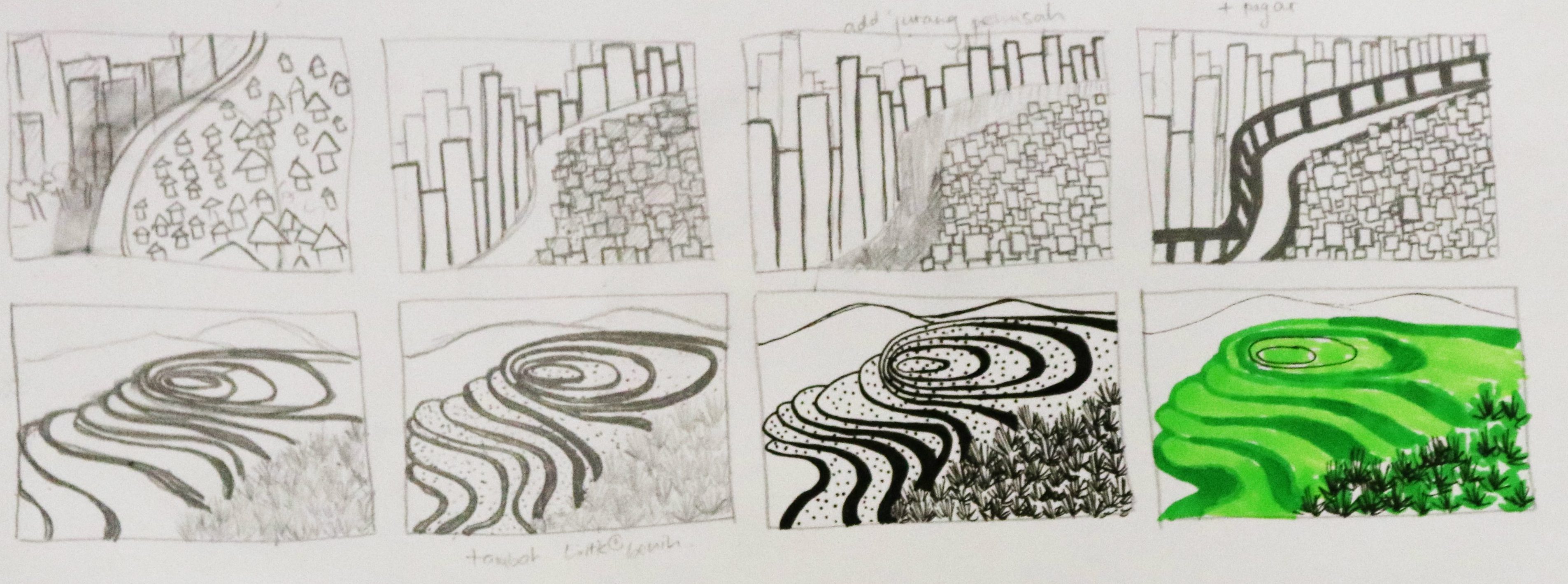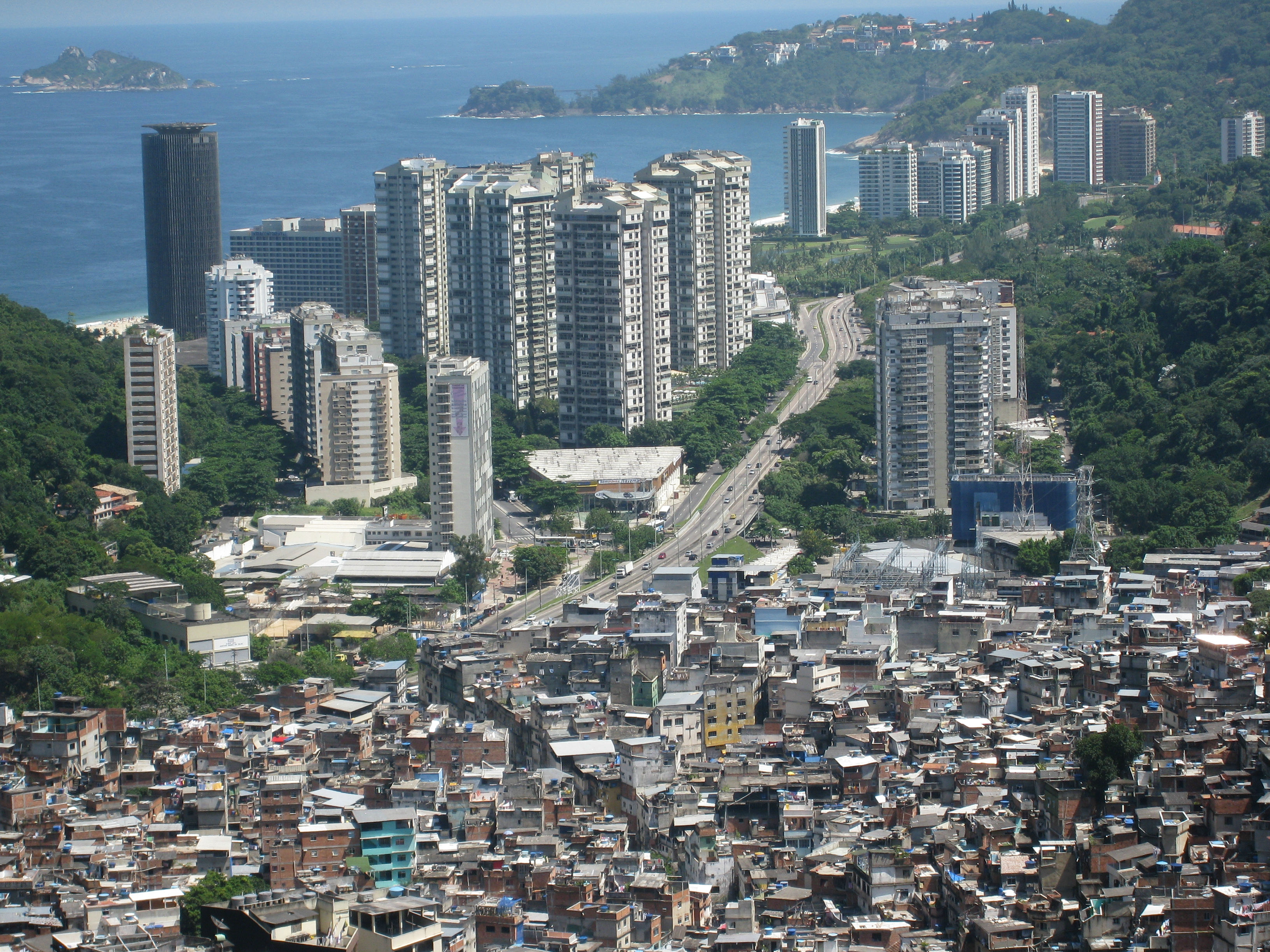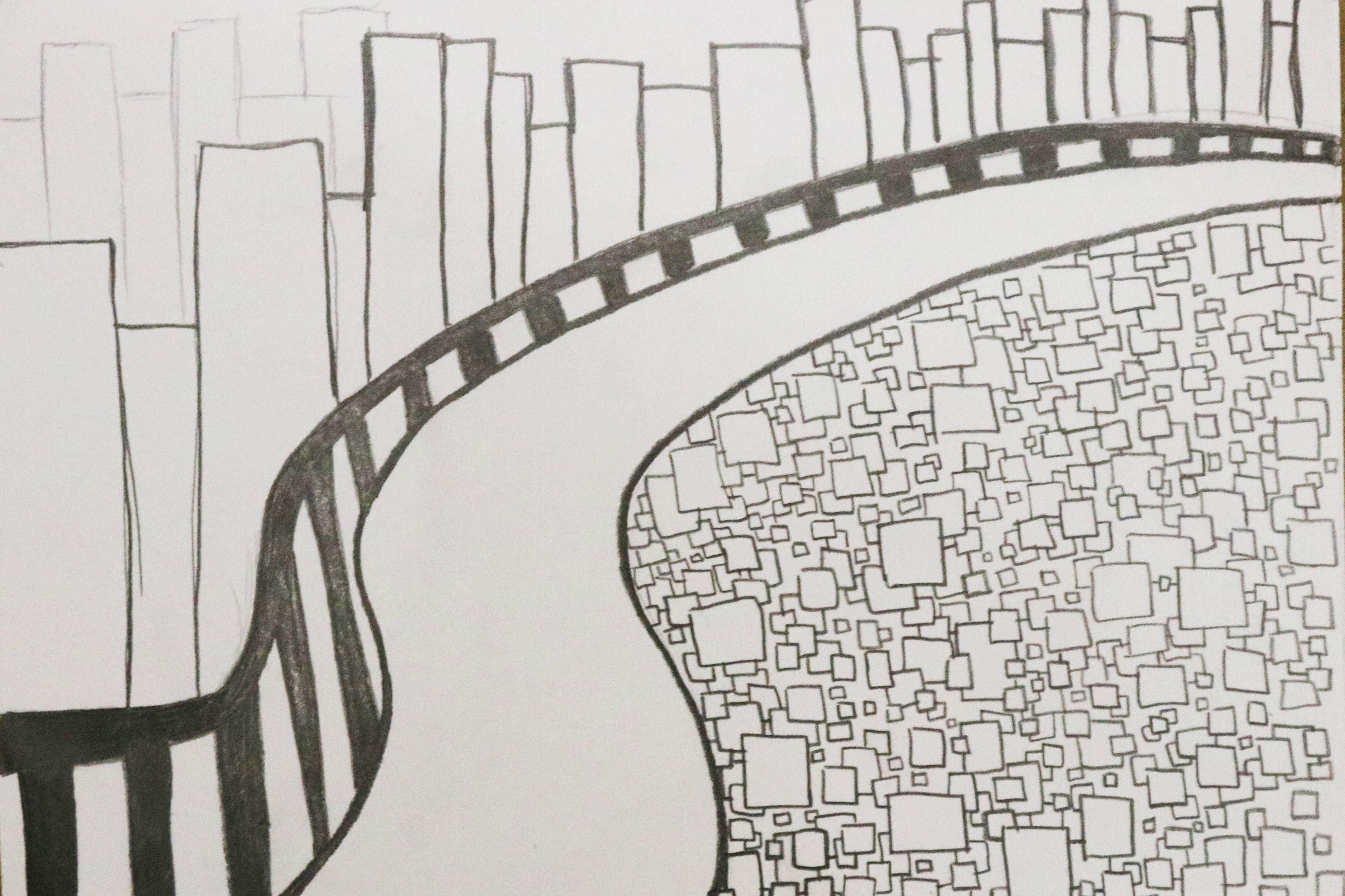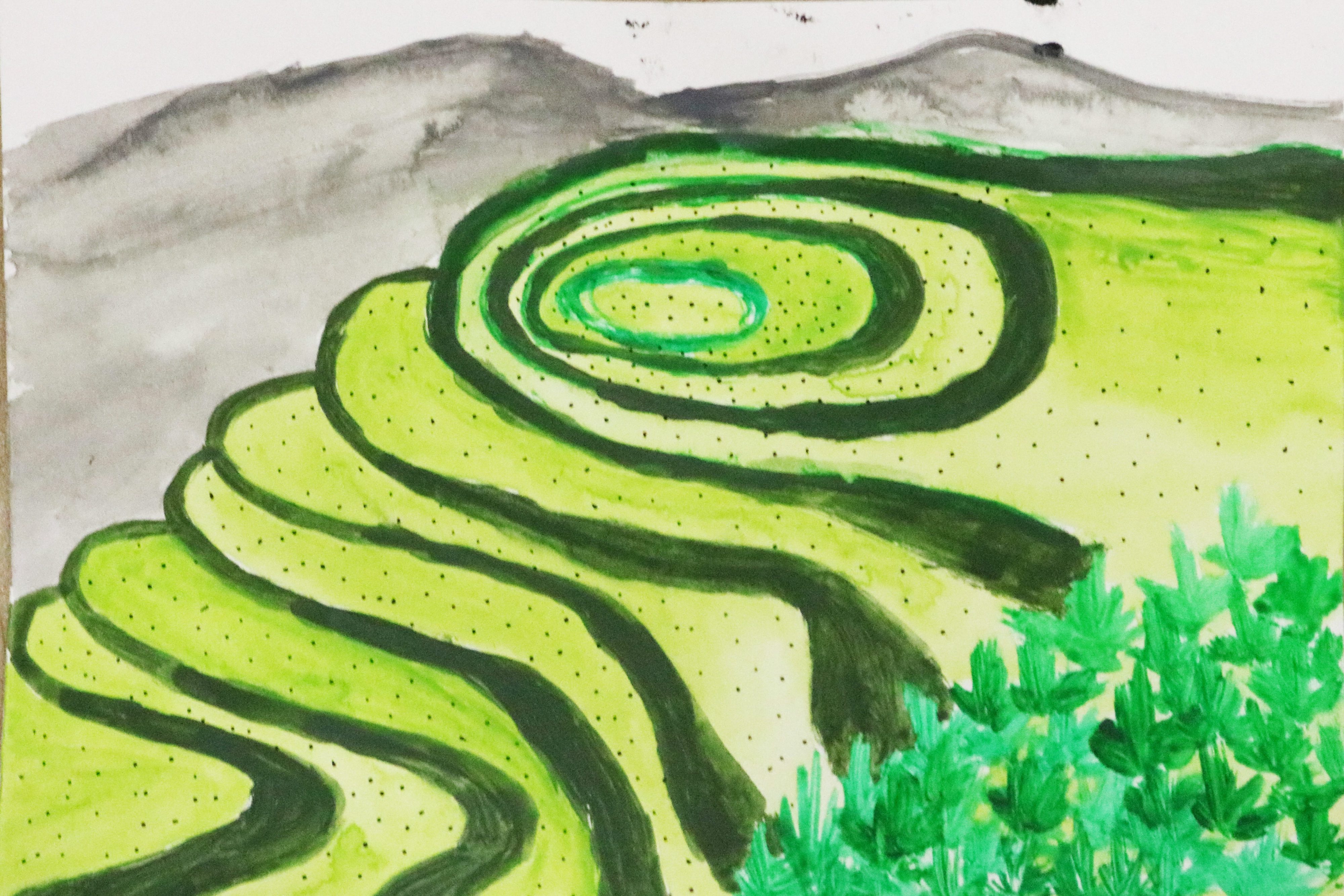So this is my final draft and the one I submit.
For this piece, I used warm colours for the front part (cream, brown, red, pink) and for the background I used cooler colours such as green and light blue to emphasise on the contrast.
Composition rules that I used are ‘line of sight’ and the ‘rule of thirds’. The first thing you would notice when looking at this piece would be the puppy, as it is located at one-third portion of the canvas. As the puppy is looking down at the bento, it guides your eyes to move to the bento and the chopstick and the pickle. After that, the eyes on onigiri leads you to the lemon tea box on the left. Straw leads your eyes out of the canvas.
Principle of design I use is movement. I made use of perspective lines on juice box and bento box as well as chopstick to point towards the puppy so that viewer’s eyes keep looking back to the puppy.
The challenges that I faced while making this piece would be to make sure the colour consistency. It is difficult to maintain because once you do not mix enough paint on palette, it is difficult to create the same colour. Sometimes, I did not mix the colour well that can cause some part become slightly lighter or darker than the rest.
Another challenge that I faced is because the paint was not as smooth as you expect it to be. Sometimes the texture on the paper becomes very rough, making it difficult to outline the item using a marker. Sometime, I also had to go out of line when outlining some part of the painting, especially the window and chopstick.
Overall, I find this module a very interesting experience and I would like to thank Joan and Keith for helping me in developing and exploring ideas to make this piece possible. Definitely looking forward for the next art class.


























































